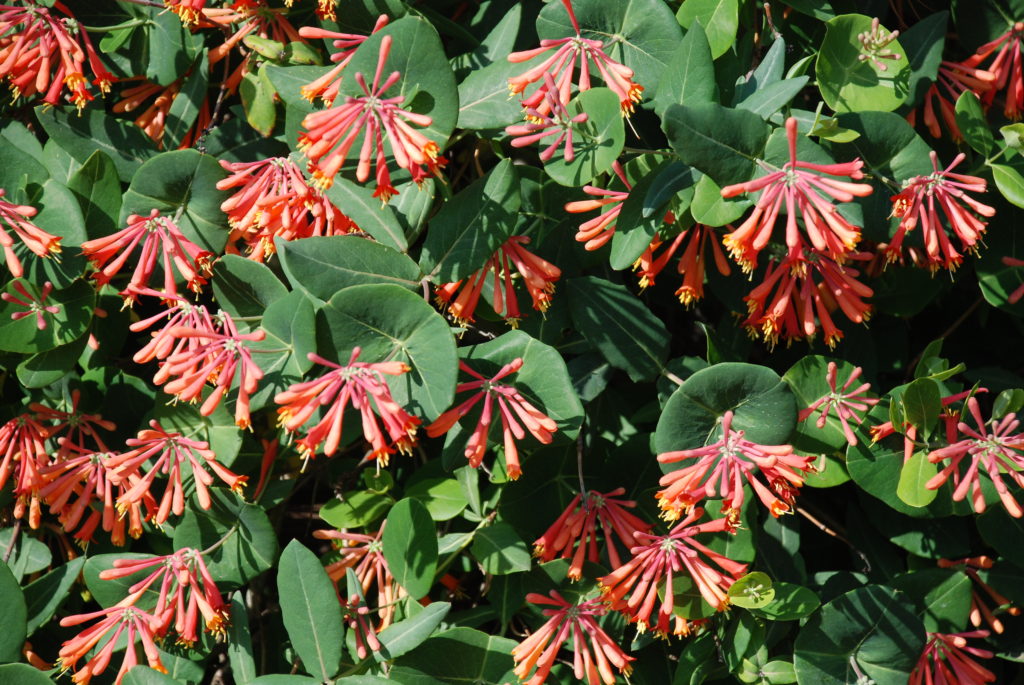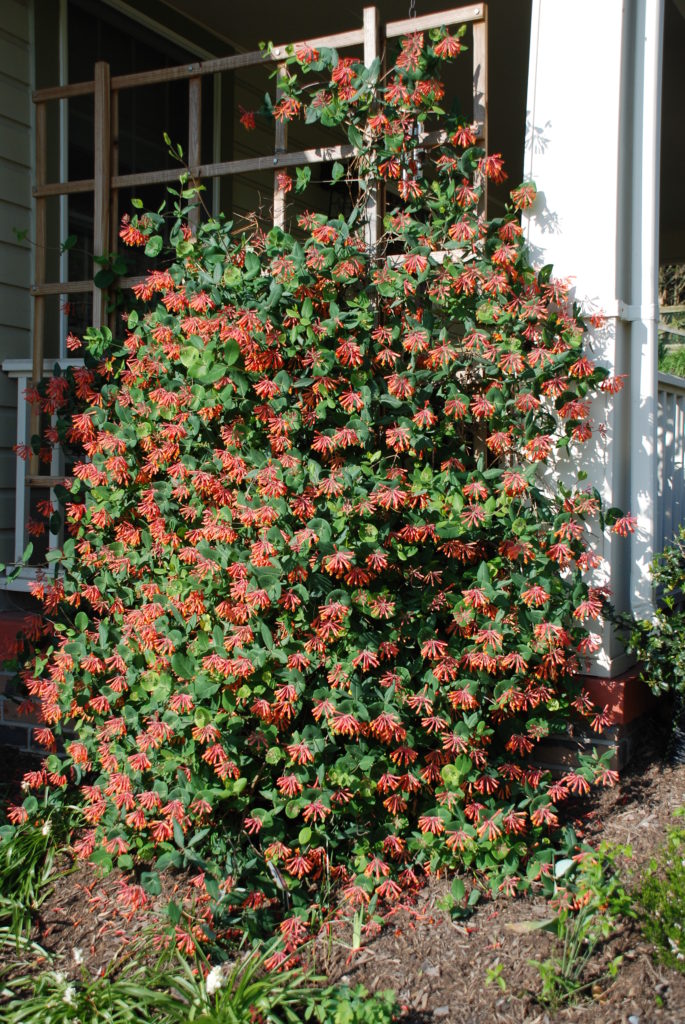
Coral honeysuckle (Lonicera sempervirens), aka trumpet honeysuckle, is a vigorous twining flowering vine that is primarily native to the southeastern U.S. (USDA hardiness zones 4 -8). Cultivars are available in shades of red, orange. and yellow. The colorful flowers appear in spring and summer, and colorful berries decorate in late summer and autumn. Invite hummingbirds to your patio via a decorative trellis or pergola.
Coral honeysuckle prefers partial to full sun, and is best grown in fertile, humus-rich, moist, well-drained soil. In early spring, fertilize with a general-purpose granular fertilizer such as 10-10-10 or 19-19-19. Too much fertilizer stimulates lush foliage and less flowers. Coral honeysuckle is a drought-tolerant vine. Moisture stress may decrease blooming. Mulch annually around the plant to conserve soil moisture.

Coral honeysuckle is a twining vine that needs a sturdy climbing support such as a trellis, arbor, or fence. Flowers originate on new growth, so most pruning activity should be postponed until fall or winter seasons.
Prune this vigorous vine annually to rein-in its vegetative vigor and maximize its flower power. Unpruned vines eventually decline in growth and blooms are fewer and many are deformed. Remove one-third of the vine’s old growth annually, cutting the vines back to the main stem. Pruning is best done in late winter. You may rejuvenate an overgrown unproductive vine by cutting it clear to the ground. When new growth returns, regular pruning will keep it looking healthy and tidy.
Pest or disease problems are a rarity, although powdery mildew and leaf spots may pop up in a hot humid summer. Inspect for honeysuckle aphids, particularly during cool, wet spring periods.
Cultivars: Favorites are ‘Major Wheeler’ (non-stop showy clusters of orange-red flowers, ‘Dropmore Scarlet’ (hybrid form with red flowers), ‘John Clayton’ (yellow-flowered, rebloomer), ‘Sulphurea’ (yellow-flowered). Yellow-flowered L. flava is native to the Ozarks.

 Posted in
Posted in 
